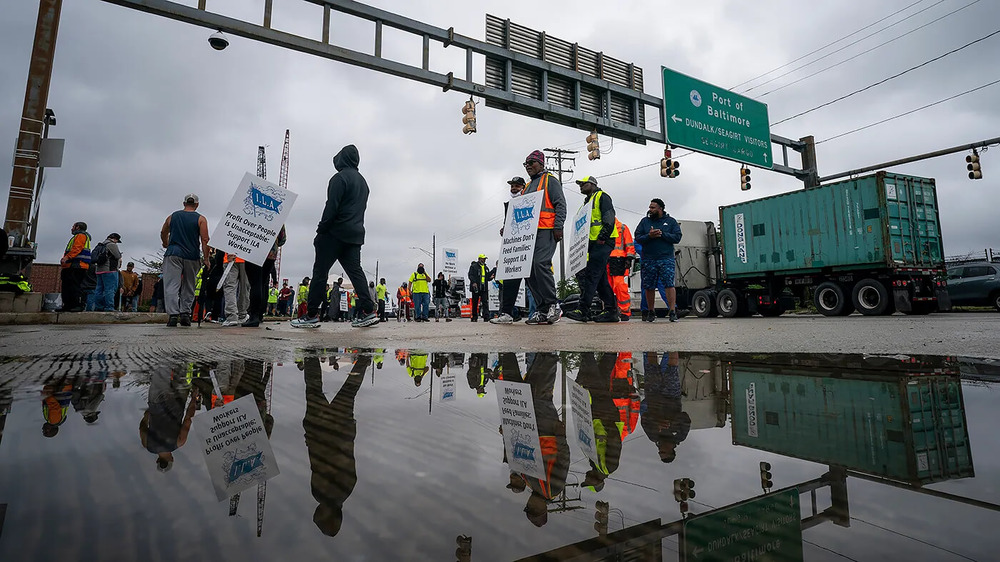People and communication key to resilience planning theme of conference about state’s economic development strategy sponsored by NJSBDC and USRP

Contact:
Jody Calendar
(973) 353-1927 or (732) 245-9181
National panelists engage statewide officials and business owners in how to prepare
for the next disaster
September 24, 2014 (Newark, NJ) – The ability to recover from a catastrophic event requires committed people with a common understanding of methodology and principles that is practiced time in and time out in real life scenarios with clear, concise communication was the theme of a recent day- long conference sponsored by the New Jersey Small Business Center network and the U.S. Resilience Project at the NJIT campus.
So, employers must put people first to succeed.
The first of several workshops, “Putting the How-to in Resilience” sponsored by the NJSBDC, USRP and the SBA, focused on strategies to mitigate impact of disruptions, sharing best practices and tools to make companies resilient to volatility and leveraging resources through partnership being key to survival and recovery.
“Preparedness is key to prosperity and competitiveness. Superstorms or other natural disasters cause disruptions and businesses have to be prepared,” said Deb Smarth, Chief Operating Officer and Associate State Director of the NJSBDC. “Small businesses represent 98 percent of all employers and more than 50 percent of the private sector employment yet research indicates that more than 43 percent of businesses do not reopen following a disaster and 29 percent close for good within two years. Small businesses and large businesses are interdependent; small businesses are part of local supply chains and create economic vitality in communities.”
Don Wirth, VP Operational Excellence and Global Supply Chain (retired), DuPont, said two things “terrify” him. Ebola which is going airborne and global shipping and those are the things that need incredible preparation for before they become a crisis.
“Action plans are great but principles are brilliant,” he told the large crowd. “A plan that sits in a drawer that you don’t work with your people- there is nothing more useless.”
Edward Zazzali, Regional Manager Large Customer Support for PSE&G, stressed resiliency is “all about planning and communication.”
He said of the 2.2 million PSE&G customers, an incredible 1.8 million were without power from Superstorm Sandy.
“What our people are doing at their own house and can they get to work” was one of the first questions he said. But because of incredible commitment and dedication of and to staff, “One million customers were back in the first five days and… we learned about communication.”
He said practical approaches such as making sure the vehicles were fueled and ready to go while the workers slept was critical as were testing generators which required advance planning when faced with unprecedented threats such as the flooding that occurred during Sandy.
Partnerships were equally important with state and federal agencies such as FEMA, he stressed.
“We’re going to attack getting small businesses up and running as soon as possible and that requires partnerships,” he said. “It’s 10 p.m. Do you know where your substation is?
He explained that if a business is near a hospital you have a better chance of having power. And he stressed that having less inventory during a storm is best.
The cost of inaction was too high, all the panelists agreed.
Bob Klemme, Associate Director, Business Continuity/Disaster Recovery, Verizon Wireless, said local personnel repeatedly practice so everyone understands the plan and how it should be executed in each Verizon office.
Verizon has 250 preparedness plans and 15 to 20 events a year to keep process and practical application at the forefront with communication. He urged businesses to pursue things as simple as car chargers to help in a disaster as well as jet packs, wireless priority service and wireless backup routers.
He said small businesses should, before a crisis, have key folks chosen for a Crisis Management Team, have two hour tabletop discussions about what to do in different scenarios, have data back-up plans and identify and reduce primary disaster risks. During a crisis, he said, emphasis should be put on employee safety, open communication, crisis management conference calls often and quick and engage customers and partners.
All panelists agreed that anger and arguments break out during a disaster and it’s important to stay focused and stay with the principles.
R. David Paulison, former director of FEMA during Katrina and now Global Emergency Solutions, LLC, warned “Focus on things you can control, stick to principles of plan but the details of the plan may change.”
“Refocus the effort and attention of the staff,” he stressed. “And keep talking about positives.”
He said discipline is key, avoid burnout and trust in resources, be flexible and listen to your staff, particularly those in the field.
“Respect the greater good,” he stressed. “Express compassion and push your plan until it breaks. Practice.”
The number of loss events – storms, earthquakes, volcanoes, tsunamis – has been on the upswing, from less than 400 in 1980 to more than 800 today. Economic losses from disasters have been increasing from about $50 billion a year in the 1980s to on average just about fewer than $ 200 billion a year in the last decade.
The five lessons learned from Sandy:
- Every storm is Different – do not plan for the next disruption based on what happened in the last.
- Families come first – employers must recognize that employees will not return to work until they feel their families are safe.
- Communicate before, during and after – Let employees update their status and employers communicate when to return to work.
- Protect your assets – Pay attention to strong roofs and proper elevation against flooding, install shutters, plywood or panels with 24 hours of an impending storm.
- Test and re-test – Practice the plan and explore what has changed in your business that might make your plan obsolete.
Disruptions come in all sizes and flavors, but there is a set of tools and strategies that leave companies poised to adjust to turbulence. Contact your local NJSBDC for guidance.
About America’s SBDC New Jersey (NJSBDC)
This non-profit network is a federal-state-educational partnership. Its expert staff and business practitioners help small business owners and entrepreneurs with every stage of business development and growth. The network headquarters is located at the Rutgers Business School in Newark. Its major funding partner is the U.S. Small Business Administration. The New Jersey Business Action Center is an additional funding partner of the NJSBDC program as well as other public and private grants/sponsorships. The NJSBDC network (America’s SBDC New Jersey) is an accredited member of the national network of SBDCs, with more than 1,000 centers and satellite offices throughout the country serving and assisting small businesses and saving and creating jobs across the nation. For more information, visit www.njsbdc.com.


















